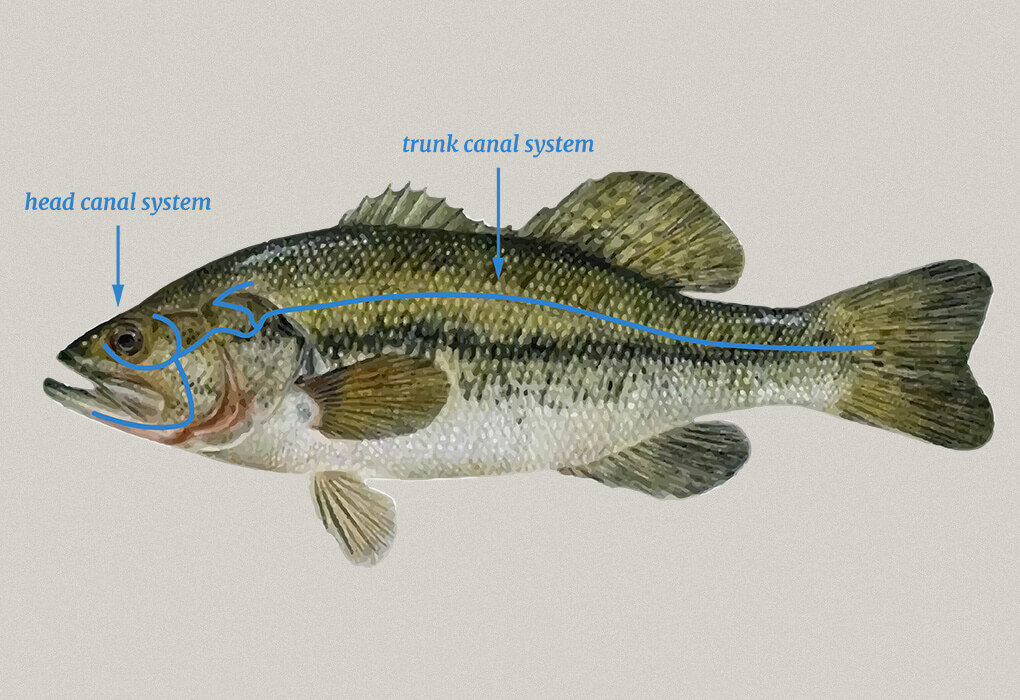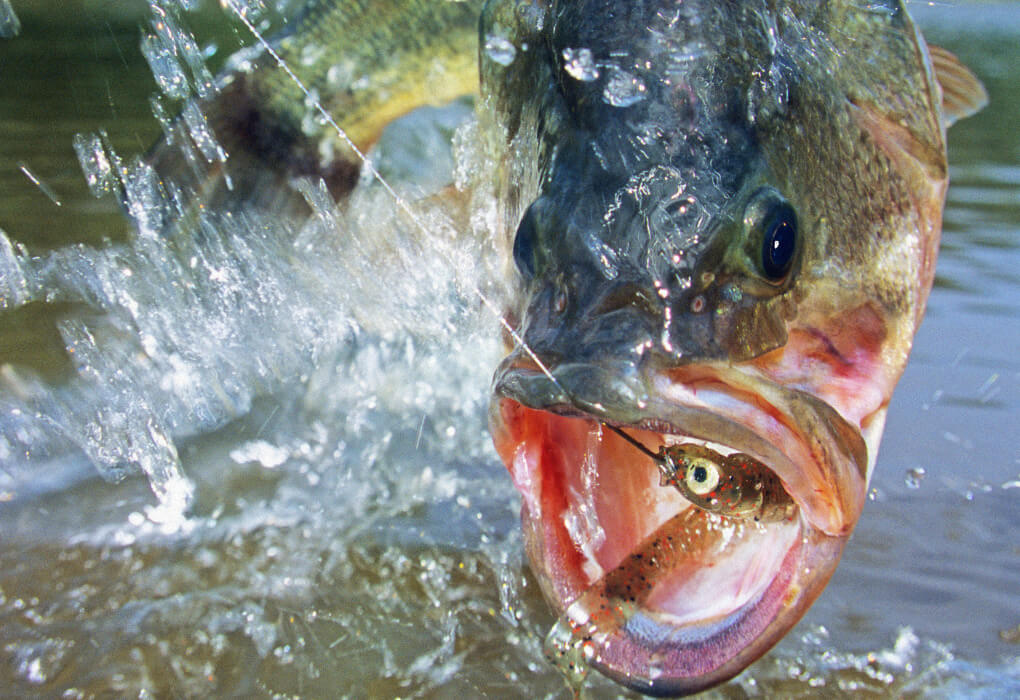Question: how many senses do largemouth bass have?
Theoretically speaking, largemouth bass has 5 primary senses just like us. These are sight, hearing, taste, touch, and smell.
However, they have an additional sensory system that’s called the lateral line or the lateralis system.
This system contains receptors that help the bass detect the exact location of movements and pressure variations in the water. In fact, it compliments their sense of hearing.
As an angler, can you take advantage of this special “sixth” sense to catch more bass?
Absolutely!
But for that, you need to understand the details of the bass’ lateral line.
What is the Lateral Line?

The lateral line system of the largemouth bass is composed of special receptors called neuromasts.
These are sensory structures made from a hair cell epithelium which has several small cilia that are stimulated by water movements.
That’s why the lateral line is a mechanosensory system.
These superficial structures are placed in a jellylike sheath called the cupula which extends below the skin surface. They are linked by a canal system that remains open to the surrounding water through a series of pores.
Once detected, the signals are transmitted through the nerve endings to the bass’ brain for interpretation.
Each cilium can “hear” or “feel” changes in water pressure and movement, and help the bass to detect the direction of the vibrations.
Not only do they help the fish to sense its own movement, but also help it to detect water displacement by nearby prey and even stationary objects.
And before you ask, smallmouth bass has this system too. In fact, all fish species have this sixth sense. But scientists believe that not all species use them as a primary hunting tool.
Since bass is an active freshwater predator, it makes full use of this system.
Actually, the bass associates different frequency ranges with different types of prey.
The neuromasts are spread across the body of the bass, especially on the head, and the trunk. They are tuned to detect the low frequencies generated by small prey like a minnow or those from a larger object.
Now, this sixth sense can’t detect pressure variations over large distances. However, with its help, the bass senses the prey within a few feet with deadly accuracy. This distance could be around 20 feet or less.
Generally, the bass depends on its sense of sight to detect its prey. In other words, it’s primarily a sight feeder.
However, if the underwater visibility is low, the lateral line plays an important role in detecting the next meal.
Here’s something really interesting…
Experiments in total darkness have shown that the bass depends solely on their lateral-line capability for finding and capturing prey in such conditions.
Make no mistake about it. The lateral line isn’t another hearing organ. The bass has inner ears that are designed to detect sound.
But the ears of a bass detect the sound of slightly higher frequencies than the lateral line.
To understand how the bass lateral line works, let’s consider the example of a paddle-tailed swimbait that’s between 20 to 30 feet from the bass.
As the rattle emits its vibrations, the bass’s inner ear picks up the noise. However, the ear is unable to determine the exact direction the sound is coming from.
Once the vibrations are within range, the lateral line detects the lower frequencies from this lure. This helps the bass to fix the exact direction and location of the object.

Lateral Line and Largemouth Bass Behavior
The point is, anglers can use the working mechanism of the lateral line system to catch big bass.
In clear water, the bass will be attracted to a spinnerbait or swimbait through its vision. But, when the water is murky, the lure should come within the bass’ range of hearing.
Because in these conditions, the bass is more dependent on the “sixth sense”.
Note, only when the lure is close enough will the bass be able to use the lateral line sensors along its body to capture its dinner.
So, make sure to give the fish sufficient time to sense and analyze the vibrations.
Also, vibrating soft plastic lures leave their own low-frequency trail in the water that the lateral line can detect.
The wiggling of the swimbait or the subtle jerk you give to a jig can leave trails in the water. So, the bass often considers these as live bait fish like shad.
The moral of this story?
For bass fishing at night, or in murky waters, vibration rules. In addition, noisy lures will also work in shallow waters with heavy cover, where the bass’ vision is restricted.
But the thing is, bass fishing is based on observational evidence and not scientific data. It’s best to experiment with different lures ranging from the noiseless to those that produce soft sounds.
Make note of the sounds that match the sensory programming of bass and use them in line with largemouth bass behavior.
In many cases, vibrating jerkbaits, topwater creature baits, and crankbaits with internal rattles can deliver outstanding catch rates.
But too many noisy lures in areas with heavy fishing pressure can make the bass conditioned to them.
Conclusion
So, does a largemouth bass have 6 senses?
Reality is, apart from its five sense organs, largemouth bass senses vibration through the lateral line system too.
That means, using noisy baits to attract bass through their lateral line mechanism is an effective 6th sense fishing technique.
However, this isn’t the ultimate bass fishing technique for a high catch rate.
You need to judge the conditions and use lures that offer a complete package with their shape, color, and sound to get the best bite rates.




